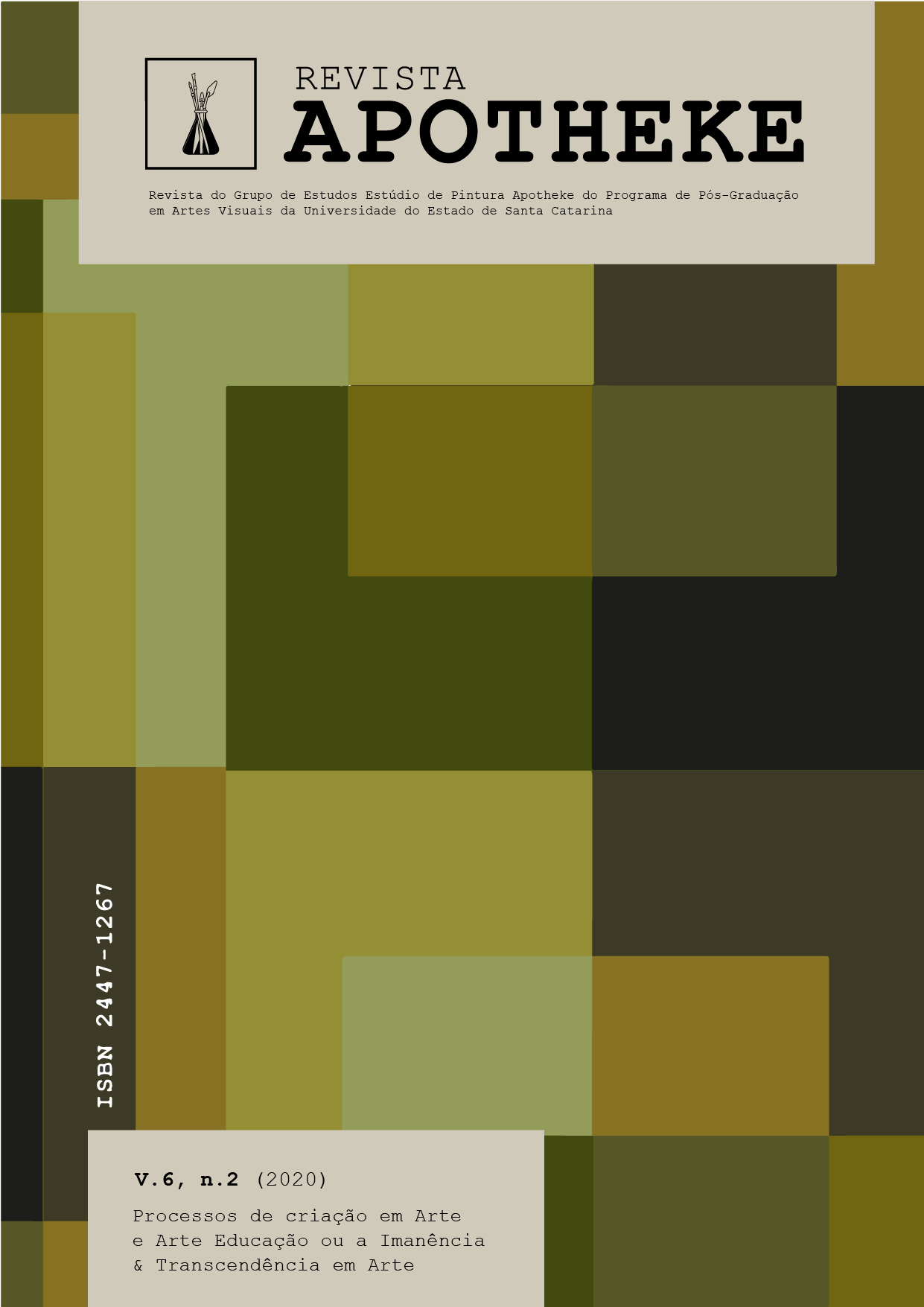Creation processes of art educators: the elaboration of didactic resources- toys for babies to learn (with) art
DOI:
https://doi.org/10.5965/24471267622020073Keywords:
education , art education , child education , supervised internship , teacher trainingAbstract
In this reflection, we aim to reflect on the process of creating art educators in the elaboration of didactic resources-toys - artifacts that contribute for babies to play and learn (with) Art. The theoretical and methodological assumptions that guided this research and the creative processes that it involved are related to the Studies of Visual Culture. As a result, we describe the experience we had in the Supervised Internship in Visual Arts, with a group of babies from Early Childhood Education and comment on the didactic-toys resources created by us. We also share three criteria to encourage teachers to create their own educational resources-toys arguing about the powers that the performance of professionals with specific training in Visual Arts can bring to Early Childhood Education.
Downloads
References
“[...] ampliar o modo de perceber a si mesma e ao outro, valorizar sua identidade, respeitar os outros e reconhecer as diferenças que nos constituem como seres humanos” (BRASIL, 2018, p.38)
“[...] não implica necessariamente a ausência de originalidade e de criatividade, mas o desejo de incorporar objetos que lhe suscitam interesse”. (DERDYK 1994, p.110)
“sobre as maneiras de se perceber o cotidiano” (NUNES, 2010, p. 54)
“[...] encantamento e coerção, sedução e dor” (NASCIMENTO, SOUZA E COELHO, 2015, p. 285)
“[...] na invenção, na busca inquieta, impaciente, permanente, que os homens fazem no mundo, com o mundo e com os outros”. (FREIRE, 1987, p. 38)
“[...] as mãos precedem os instrumentos (buchas e pincéis) [...]”
“[...] as crianças necessitam de grandes superfícies de papel [...]” (CUNHA, 1995, p. 19)
“[...] saberes que nos ajudem a dar sentido ao emergente e ao mutável, a compreendermos a nós mesmos e ao mundo em que se vive, tanto por parte do professorado como dos alunos”. (HERNÁNDEZ, 2007, p.35-36)
“[...] a criança se alimenta, entre outras fontes, da arte adulta a que tem acesso, que se configura como devir de seu trabalho a partir de um caminho próprio que ela mesma desenvolve” (IAVELBERG, 2013, p.18)
“O trabalho de fidelização das famílias à educação em arte dos filhos é muito importante porque integra propósitos da casa e da escola em benefício do aluno”. (IAVELBERG, 2013, p. 63)
“[...] participação social nos equipamentos e bens culturais disponíveis na região.” (IAVELBERG, 2013, p. 63)
Downloads
Published
Versions
- 2020-08-30 (3)
- 2020-08-30 (2)
How to Cite
Issue
Section
License
Copyright (c) 2020 REVISTA APOTHEKE

This work is licensed under a Creative Commons Attribution-NonCommercial 4.0 International License.
Copyright and Licensing Policy
Authors of works submitted to Revista APOTHEKE authorize their publication in both print and digital formats exclusively for academic purposes. Reproduction is permitted, provided that the source is properly cited. Authors confirm the originality, authorship, and unpublished status of their manuscripts.
Articles published by the journal are freely available and intended for academic and non-commercial use only. All copyrights are transferred to the journal. The content of signed articles reflects the views of their respective authors and not the official position of Revista Apotheke. The author(s) agree to always cite the following reference when republishing or referring to the content originally published in Revista Apotheke:
“This article was originally published by Revista Apotheke in volume (insert volume), number (insert number), year (insert year), and is available at: http://www.revistas.udesc.br/index.php/APOTHEKE/index”
It is the sole responsibility of the authors to obtain written permission for the use of any material protected by copyright law included in their articles. Revista Apotheke is not responsible for copyright infringements committed by contributors.
Authors retain copyright and grant the journal the right of first publication, with the work licensed under a Creative Commons Attribution-NonCommercial License (CC BY-NC):
-
Attribution (BY): Licensees are allowed to copy, distribute, display, perform, and create derivative works, provided that proper credit is given to the author or licensor, in the manner specified.
-
NonCommercial (NC): Licensees may use the material only for non-commercial purposes.
After publication, authors retain the rights to their work and may republish the text.



